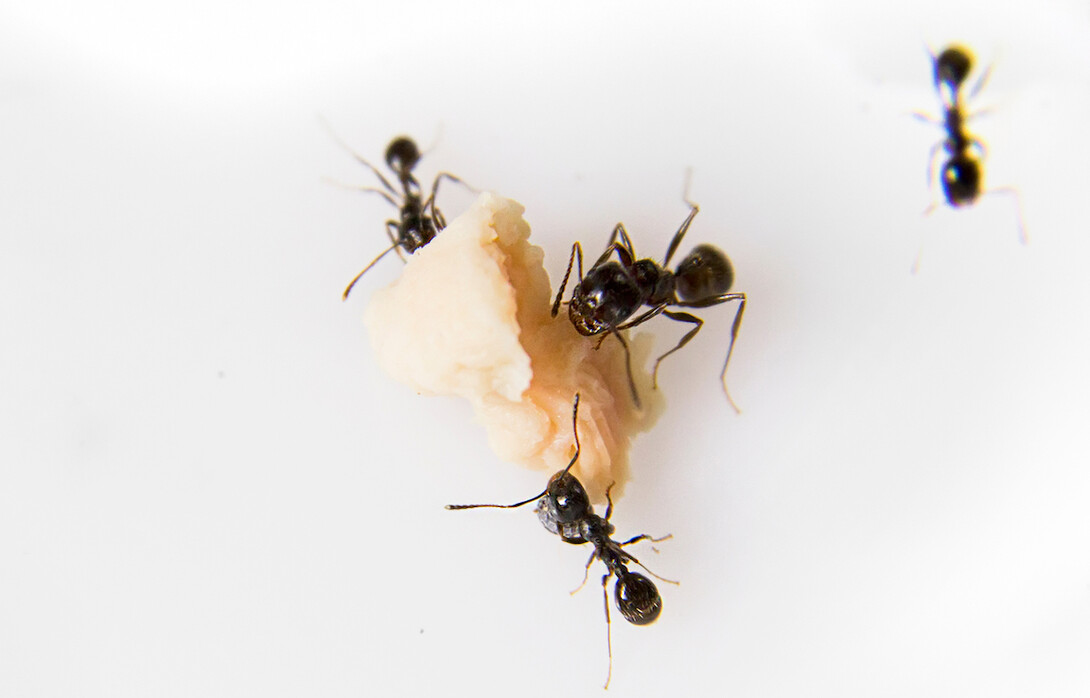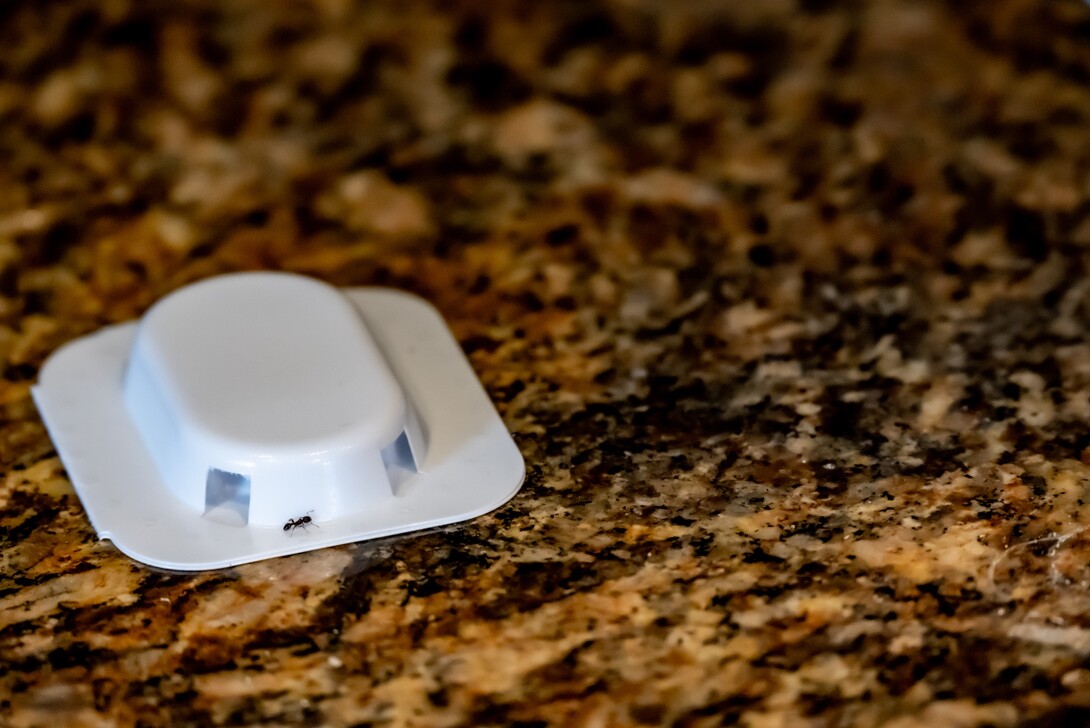
Springtime brings seesaw temperatures, greening grass and trees, and the increasing activity of four-, six- and eight-legged creatures — with some wanting to move into nearby homes.

Ants are known especially for their springtime appearance, marching in through cracks around windows, doors and foundations. Seemingly endless lines of these crawlers make their way into kitchens and pantries, anywhere they can pick up food, and most species aren’t picky. They’ll find their way to crumbs or pet food, and soon, the few grow into a swarm. Ants are adept at being repeat offenders since they’re able to leave a scent trail for others to follow.
Kait Chapman, urban entomologist and educator with Nebraska Extension in Lancaster County, spends a chunk of her time answering phone calls and emails, and identifying samples from Nebraskans who are facing the irritation of these spring home invaders and others.
“Insects are becoming more active and they’re hungry, so they’re going to be out foraging, looking for things to eat,” she said. “In the context of springtime and the home invaders, it’s probably ants.”
The most common intruder is the odorous house ant, a small black or dark brown species that gets its name from the smell emitted when crushed. An internet search will turn up suggestions of deterrents, such as lemon water, vinegar or cinnamon, but Chapman said those likely won’t be a long-term cure and there is no scientific backing to those claims. She said it’s best to take a thoughtful approach when trying to limit the presence of insects in the home.
“I try to encourage people not to reach for the pesticides on first instinct because there are safer things that we can do first,” Chapman said. “With ants, using sprays might kill the ones you’re seeing, but you’re not going to get rid of the problem because you’re not getting rid of the nest.”
Chapman recommended vacuuming up any ants seen, so as not to further emit a smell, and wiping down surfaces where they’ve been seen.
“Ants follow each other with pheromone trails, so when they’re following each other, it’s a good idea to take a basic household cleaner — Windex works really well — and wipe down those surfaces to eliminate the pheromone trails,” she said.
Another simple measure is setting ant baits, which contain a sugary liquid mixed with a poison. While they are a pesticide, Chapman said the controlled nature of their use prevents the deleterious effects pesticides can have in homes and lawns.
“Ant baits are great because the ants will come and take the bait back to colonies, and hopefully reach the queen, which is the one laying the eggs,” Chapman said. “Unless you take care of the queen, you’re going to continue to have an issue.
“And bait stations are good because they’re usually covered, and you can place them where pets or small children can’t get to them, so it’s a much safer option. When you use spray pesticides, you don’t have any control over where that pesticide is going, or what it’s killing, and we don’t want to get rid of helpful insects or expose ourselves or our pets to pesticides.”

Most ant species that homeowners see inside are indeed a nuisance, but harmless. The one exception is carpenter ants, which can be black, dark brown or red and larger than typical forager species. Carpenter ants can wreak havoc on wood structures. While they’re most happy to make nests in dilapidated, damp wood structures or trees, they’ll also burrow into construction wood. If a homeowner suspects they have an infestation of carpenter ants, they’re likely going to need professional help.
Chapman said other invaders, such as stink bugs and clover mites (tiny red arachnids), are also harmless, and the vacuum is often the best option.
“We get a lot of calls about clover mites, and they’re so small that even screens won’t stop them,” she said. “If you’re seeing them, we recommend just getting a vacuum and using that.”
Other invaders are more typical in the fall, Chapman said, and if there’s a consistent problem area in the home, it might be time to do a check of seals around doors, windows and other areas.
“It’s a good idea to look around the house and find those places where they might be getting in,” she said. “Similar to weatherproofing, it’s beneficial to make sure doors and windows are sealed, and caulking holes can help.”
Chapman said homeowners can also be mindful of landscaping and tree placement in their yards.
“Taking a thoughtful approach outside the house is another way to combat pests,” she said. “Having places insects can hide, like bushes, right up against your house can make it easier for them to get inside. Building a barrier of river rock or similar landscaping around the house reduces potential insect habitat.
“Removing firewood from the side of the house or removing tree branches touching the house is also a good preventative, because those can provide an ant highway, especially for carpenter ants.”
Nebraska Extension offers specimen identification at their Lancaster and Douglas-Sarpy County offices, in Lincoln and Omaha, respectively. Extension also keeps an online photo archive of common home, lawn and garden pests and recommendations on how to manage them.







